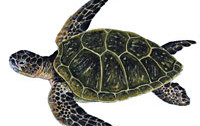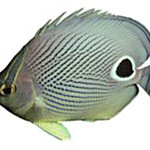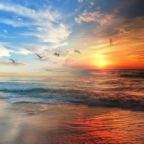
They have traveled the oceans and have outlived the dinosaurs. They have become an integral part of the traditional culture of many coastal indigenous peoples throughout the world. Today, all but one of the species features on the IUCN RED List as endagered or critically endangered. Extinction looms!
There are only a few large nesting populations of the green, hawksbill and loggerhead turtles left in the world. Australia has some of the largest marine turtle nesting areas in the Indo-Pacific region and has the only nesting populations of the flatback turtle.
Until fairly recent times, their long presence in the tropical and sub-tropical seas and beaches of the planet seemed set to continue. However, a myriad of threats such as hunting for meat, shell and eggs; fisheries bycatch; pollution; boat strikes; and introduced predators have had the effect of wiping out entire turtle populations, or at the very reducing them significantly. Changes to important turtle habitats, Habitat change and destruction, especially of coral reefs, seagrass beds, mangrove forests and nesting beaches compounds their problems.
Marine turtles are one indicator species that is very difficult to miss. The most unique and recognizable feature of a turtle is its shell, the design of which has changed little in almost 200 million years and which comprises many separate bones. There are two parts of the shell, the upper part called the carapace, and a lower part known as the plastron. The carapace and plastron of most turtles are joined at the sides by a bridge. Hard scales (or scutes) cover all but the leatherback, and the number and arrangement of these scutes can be used to determine the species. They have four strong, paddle-like flippers and like all reptiles, air-breathing lungs. The characteristic beak-like mouth is used to shear or crush food.
Young marine turtles drift and feed in the open ocean until ready to settle near inshore feeding grounds. They grow slowly and take between 30 and 50 years to reach sexual maturity. They live for years in the one place before they are ready to make the long breeding migration of up to 3000 kilometres from the feeding grounds
to nesting beaches. Nesting females return to the same area, believed to be in the region of where they were
hatched. Courtship and mating take place in shallow waters near the nesting beach. Females often mate with
more than one male. After mating, the males return to the feeding grounds.
Our earthdive partner UNEP-WCMC have developed a Marine Turtle Interactive Mapping System which provides a wealth of information on the various species, and it can be accessed here
The Flatback Turtle (Natator depressus) is endemic to the continental shelf of Australia. Although they feed around Papua New Guinea and Indonesia as well as within the Great Barrier Reef World Heritage Area, they nest only in Australia. They inhabit the subtidal soft-bottomed habitats of the continental shelf and feed primarily on jellyfish and benthic soft-bodied invertebrates such as soft corals and sea pens.
The distinct low-domed flat carapace has upturned edges and is covered by a thin skin. The adult carapace can grow to 900cm.The head and flipper in adults is olive grey and their plastron is white, while newly hatched fatbacks are grey with a white plastron. This species is currently not listed as endangered by the IUCN, but it faces the same pressures that threaten other sea turtle species.
The Green Turtle (Chelonia mydas ) can be found in warm tropical waters from New England to South Africa and in the seaweed-rich coral reefs and inshore seagrass pastures in tropical and subtropical areas of the Indo-Pacific region. When immature, green turtles are carnivorous with adults mostly herbivorous, feeding principally on seaweeds and seagrasses
Green turtles are the largest of the sea turtles with a highly domed carapace growing to approximately 100cm. The shell is typically smooth. The carapace colour varies from olive through shades of brown to black. Overlying this base colour are complete or broken lines of buff or reddish brown. The head is relatively small. The plastron is white or cream. The name ‘green’ turtle is thought to derive from the green coloured fatty flesh beneath the carapace. The species is classified as endangered on the IUCN Red List
The Hawksbill Turtle (Eretmochelys imbricata) occurs in tropical and subtropical seas of the Atlantic, Pacific and Indian Oceans. They are particularly fond of clear water coral reefs ecosystems, but may also be found in shallow rocky inland waters and mangrove-edged inlets and bays. The hawksbill is one of the smaller species of sea turtle, growing to a maximum 90cm in carapace length and weighing up to 80kg. They have typical hard shells with unique features such as large thick, overlapping costal scutes (the shell plates which lie one row inwards from the edge of the carapace). The species name is reflected in the beak-like mouth. Its main identifying feature is the posterior edge of the carapace, which is serrated
The scutes are dark reddish-brown or black on a cream to amber background. Many hawksbills have barnacles attached to their shells. The plastron is generally a light cream to amber colour.
The diet of the hawksbill comprises of fish, gastropods, echinoderms, coelenterates, bryozoans, and in particular – and surprisingly – sponges. Very few vertebrates other than a few fish species are known to consume sponges, which contain spicules that would lacerate the lining of the alimentary tract of most animals. The hawksbill is one of the most sought after species of marine turtles world wide due to its edible flesh and attractive shell used in the making of tortoiseshell jewellery, leading to the species being classified as endangered on the IUCN Red List
The Leatherback Turtle (Dermochelys coriacea) is possibly the most highly evolved and specialized of all the sea turtles. It is certainly the largest, with an average curved carapace length of 155cm and weighing up to 700 kg. Leatherbacks are nomadic, pelagic creatures distributed worldwide in all tropical seas, possibly traveling between oceans. They are quite cold water tolerant and have frequently been observed in the temperate waters of the north Pacific and Atlantic oceans.
As the common name leatherback implies, this turtle lacks a hard shell. Instead, the deeply fluted and fusiform (spindle-shaped) shell and flippers are covered with soft skin. Colouring is dark gray to black with whitish or pinkish spots covering the shell and limbs. There is usually a large, often pinkish prominent spot on top of the head which is large, rounded and grades smoothly to the neck and shell. The front flippers are very large, measuring up to 300cm. from tip to tip. The leatherback turtle is carnivorous and feeds mainly in the open ocean on jellyfish and other soft-bodied invertebrates. The species is classified as critically endangered on the IUCN Red List.
The Loggerhead Turtle (Caretta caretta) is found in temperate and subtropical waters throughout most of the world, occurring in an enormous range from north to south. In the Western hemisphere they are found as far north as Newfoundland and as far south as Argentina, inhabiting subtidal and intertidal coral and rocky reefs and seagrass meadows in addition to deeper soft-bottomed habitats of the continental shelf. The head is very large with strong, heavy jaws. The carapace is heart-shaped and a reddish-brown and typically 82-105cm long. The plastron is yellowishbrown. The front flippers are short and thick with 2 claws, while the rear flippers can show 2 or 3 claws Loggerheads are carnivorous, feeding on benthic gastropod and bivalve molluscs, crabs, sea urchins, shellfish and jellyfish. The species is classified as endangered on the IUCN Red List.
The Olive Ridley Turtle (Lepidochelys olivacea) has a worldwide tropical and subtropical distribution, and can be found in shallow, protected waters, especially in soft-bottomed habitats. For some reason as yet unknown, they do not enter the Caribbean Sea. The olive ridley is the smallest of the sea turtle species with a carapace length of only 70-80cm. The species name derives from the olive color of its heart-shaped shell It may be identified by the uniquely high and variable numbers of vertebral and costal scutes or shell plates. Olive ridleys consume a variety of food including small shrimp, jellyfish, crabs, snails, fish, and in some populations, algae also forms part of the diet. The species is classified as endangered on the IUCN Red List









Social Profiles